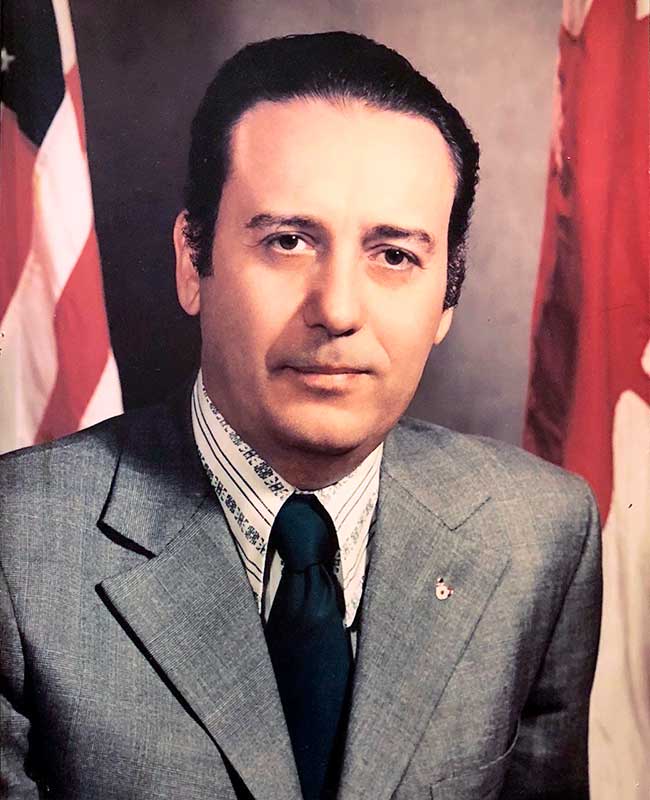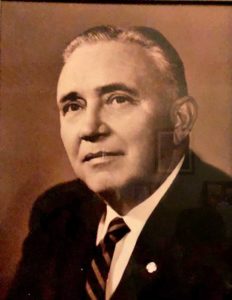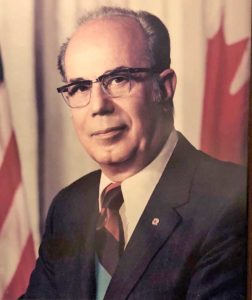The IAFF contends that U.S. President Richard M. Nixon may be the strongest single unifying force for American labor in years.
Coalition of Public Employee Organizations
The IAFF joins the Coalition of Public Employee Organizations to form an action program with an emphasis on legislation, legal problems and increased political involvement during the national election year.
31st IAFF Convention
The IAFF holds it 31st Convention in Los Angeles, California. IAFF Secretary-Treasurer Al Albertoni decides not to run for a fifth term of office. Albertoni promised his wife and family at the IAFF Convention in Toronto in August 1968 that he would stand for re-election one more time and then relinquish this office for a less complex life in retirement. Frank Palumbo is elected IAFF secretary-treasurer. Delegates debate a record 189 resolutions.
Nixon Appoints IAFF Leader to Board
U.S. President Richard M. Nixon names IAFF Secretary-Treasurer Al Albertoni as one of five new members to the Board of Vocational Education. He is the only representative of organized labor on the nine-member Board.
President Signs Fire Fighter Retirement Bill
U.S. President Richard M. Nixon signs the Hazardous Duty Retirement Bill , PL 92-382, for federal fire fighters into law.
McClennan Quote
“The number of members of minority groups in the populations of many of our larger cities is out of proportion to the number of people from those minorities that are in the ranks of the fire service.”William H. McClennan, IAFF President (1968-1980)
IAFF Takes Stand for Fair Pay
The IAFF petitions the Pay Board and the State and Local Government Committee of the Cost of Living Council for justice and fair pay for fire fighters.
Labor Department Improves Overtime Policy
The Department of Labor’s Public Employment Program agrees to major policy changes requested by the IAFF related to overtime pay, including deletion of the 10 percent limitation on recalls in the revised Public Employment Program (PEP) Handbook and allowing Program Agents to reduce hours to a reasonable minimum of 40 hours per week since fire fighters generally worked more hours than other public employees. Hours worked over and above 40 hours per week may be considered overtime, even if they are not compensated as such, since the normal work week in public service is 40 hours.
“Emergency” TV Series
A new television series, “Emergency,” premieres. The show is set against background operations of the Los Angeles County Fire Department’s innovative paramedic rescue squads.
Boston Fire Fighters Killed
Members Donations Bolster MDA Telethon
IAFF members raise more than $100,000 for the Jerry Lewis Muscular Dystrophy Telethon.
Little Rock Fire Fighters Killed
Two Little Rock, Arkansas, fire fighters die battling a fire in a three-story apartment building when a wall collapsed, and seven others were injured. The fallen men were on the right side of the fire truck when the interior floor collapsed, causing the wall to explode outward, hurling debris across the street. The $65,000 aerial truck was crushed by the weight of the wall.
U.S. Lags Behind Canada
Federal workers in the United States lag far behind their Canadian counterparts when it comes to collective bargaining rights.
New Orleans Fire Fighters Killed
December 25, 1972
Three New Orleans, Louisiana, fire fighters are killed battling a Christmas Day blaze when an old brick wall and a wrought iron balcony collapsed with more than one dozen New Orleans fire fighters on it, killing three and injuring 14. A backdraft from the rear and an explosion of accumulated gas caused the wall to fall forward. Four of the seven abandoned buildings in the block were burned out and in the process of being demolished when the fire began.
DoL Ruling Regarding Captains
The U.S. Department of Labor rules that fire service captains must become part of collective bargaining units as they are not supervisors.
10-Carat Gold Ring
The IAFF makes a new 10-carat gold ring available to members for $56.











